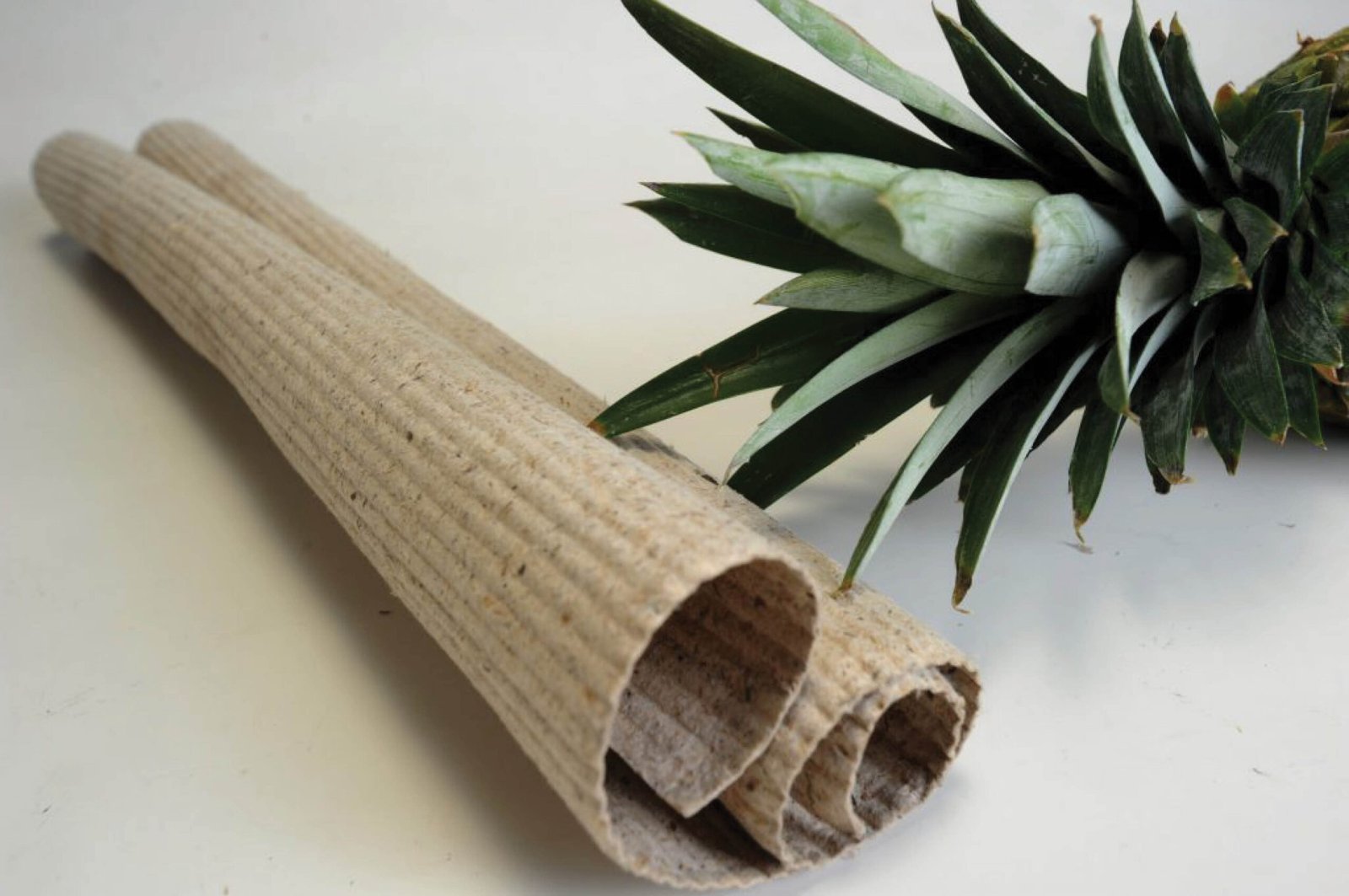Transcription Anthology Festival Team and Judith Torres
Images Anthology Festival 2021
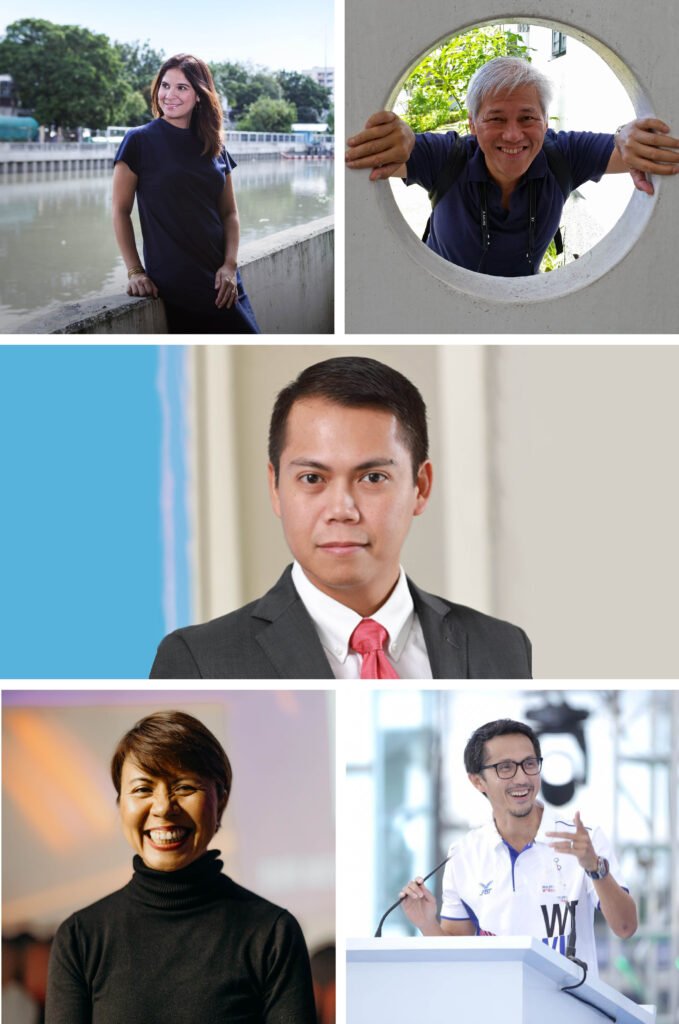

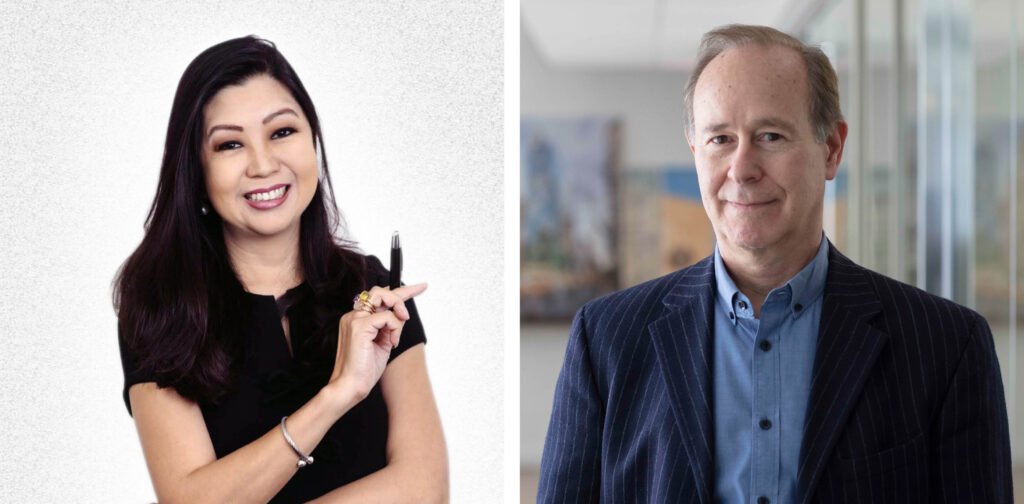

- Hosts of WTA Architecture and Design Studio:
- Alexa Arañaz
- Arvin Pangilinan
- William Ti, Jr.
Alexa Arañaz: Allow me to introduce everybody. We have landscape architect and environmental planner Paulo Alcazaren of PGAA Creative Designs. He is a writer and journalist with over a dozen books and publications on architecture, design, and urban history. He is a member of the International Council of Monuments and Sites – Manila, the Philippine Geographical Society, founding member of the Heritage Conservation Society. He sits on the Escuela Taller de Filipinas Foundation board and is chairman of the Board of Landscape Architecture at the Philippine Regulation Commission.
Julia Nebrija of Agile City Partners was an urban specialist with the World Bank before serving as the Assistant GM of Operations for the Metropolitan Manila Development Authority, and most recently, as COO of the Philippine Japan Initiative for New Clark City.
Next, we have Buds Wenceslao, CEO of D.M. Wenceslao and the managing director of Aseana City;
Rhea Matute, executive director of the Design Center of the Philippines;
Vince Dizon, president and CEO of BCDA, presidential adviser on flagship programs and projects, and deputy chief implementer of the national action plan against COVID-19; and
Our blind reactors are Cathy Saldaña, principal of PDP Architects, and Clifford Pearson, contributing author of Architectural Record and co-author with A. Eugene Kohn of The World By Design.
Arvin Pangilinan: Let’s start. What makes a city? Ladies first
Cathy Saldaña: What, in essence, makes a city? Is it infrastructure? Is it the power and the energy, the character of the place? Is it the mix of both? Old and new, heritage and modern structures? At the end of the day, it’s the people. The people who power it. The people who fuel it. The people who animate it and make decisions about living in it.
Julia Nebrija: Good morning from Spain. I agree with Cathy. What makes a city is the people. There are lots of aspects we can talk about, but at the end of the day, we all want the same thing from our cities—a nice place to live, someplace we can enjoy, where we can find jobs that enrich us, help us reach our potential, and provide a great quality of life to our kids. And I have to tell you, here in northern Spain, I’m living for the first time in my life in a 15-minute city, and it just makes life easy. It makes sense.
You step outside, and there’s a park within five minutes’ walk from your house. There’s a grocery store at the corner and a clinic nearby. There are trees on the street, access to two public squares, and architecture that gives you a sense of place. It feels magical because I haven’t ever lived this way on a daily basis, yet it’s quite intuitive. It’s a city that makes us feel good, makes our day easy and comfortable and enjoyable. And that’s been on my mind a lot recently as I’m having this experience.
Rhea Matute: Well, I agree with Cathy and Julia. I’ve been in a couple of talks this week discussing hubs and social fabric. It is the people and the infrastructure in the city that promote the creation of the social fabric. As a kid, I watched Sesame Street, and one of my favorite songs was Who Are the People in Your Neighborhood? That’s the ideal concept of a city—knowing your neighbors, talking to the baker, the guy who makes your coffee at the corner café, knowing who their kids are, and being able to nurture that relationship.
Unfortunately, Metro Manila does not provide the pocket of space that allows you to know your neighbors and the people that support your life. But I hope we can change that with people like Paulo and William, to create those structures and those systems by which we can have these relationships.
Paulo Alcazaren: Another thing that makes a city is the freedom to do what you want and go where you want. But this past year, we have not been living in real cities because we are imprisoned in our homes. That’s what I miss most—the freedom to go out and enjoy other people. I’d like to ask Vince Dizon about the circuit breaker that’s to be implemented today.
Vince Dizon: Hi. Yeah, sorry. We’re experiencing a bit of a surge, so everyone, please keep safe. If you don’t need to go out, better not. Better to stay home. My apologies to everyone.
To weigh in on what makes the city, this might be an oversimplification, but we always live by the idea that bottom line, when you design a city, when you try to build a new city, or when you improve on an existing city, people must always be at the center of the decisions. It may sound simple, but it’s really not. Case in point, the cities in the Philippines are not cities built for people. They are built mostly for cars. They are not built for public transport, not built for walking, and not built for biking. They are not built to have a healthy lifestyle and a healthy sense of space.
So what we tried to do the past five years, with the help of people like Julia and now with Cathy and her firm, while designing a railway from Subic to Clark, is we center all our planning and execution on people first. So if you go to Clark City now, you will see dedicated bike lanes, a running BRT system, wide pedestrian walks. You will see urban design standards and guidelines meant for people to enjoy the city. You have infrastructure such as places to park cars near railway stations, near bus stations. So people, even those coming from Metro Manila or Northern Luzon, can take public transport or take a bike or walk, you know? It’s not going to be done when this administration ends next year but, hopefully, we’ve started something that will continue for years to come.
Julia Nebrija: It’s both simple and complicated. It’s simple because we know we want wide sidewalks; we know we want tree-lined streets; we want this quality of life and to see the happiness on our kids’ faces when they play in a playground. That’s something everyone can understand. The complicated part is getting the policies in place, getting the infrastructure in place, getting the investments in, getting the decision-makers there, you know?
Buds Wenceslao: That’s why it’s important to have a holistic view. As a private developer doing a city-wide development, when we plan, we look at how it will be maintained and the infrastructure’s longevity, from landscaping to the buildings themselves. We want to be sure they can be sustained and maintained long-term.
Paulo Alcazaren: The simpler thing about New Clark City is, unlike Metro Manila, you don’t have to deal with 16 cities in one town or 17 mayors. You’re just dealing with New Clark City and BCDA, right. The problem of managing and building cities in the Philippines is the overlapping jurisdictions of the LGUs (local government units) and national agencies, which complicates many things on the ground.
Vince Dizon: The devil is really in the details. You’ve got to have every single minute detail right for it to work. For example, there’s so much open space here in Clark, but you need to activate those spaces. You need to put the infrastructure that will allow people access. That will allow them to park. You need to put the restrooms, pathways, et cetera, and it’s very, very detailed. We work with the best planners in the world from Singapore. You cannot imagine the kind of back and forth between the Singapore planners and our Japanese partners to make sure the urban design standards and guidelines cover everything. So our philosophy is we try to show proof of concept. We show, as best as we can, that it can be done. And, hopefully, things get replicated slowly, surely.
Paulo Alcazaren: It can be done. It’s just we forget our history and have forgotten how to build cities correctly. Look at the history of town and city building in the Philippines past the 1950s—we’ve forgotten how to plan and develop at that level of detail. We must rediscover, an approach to urbanism we have to rekindle that’s specifically pertinent to Filipino culture. We need that base to carry it forward. I respect our Singaporean and Japanese partners in all of this, but what’s critical and possibly lacking is the Filipino culture and the use of space.
Julia Nebrija: Talking about being very detail-oriented, when we were doing the Green, Green, Green project with DBM and working with 145 cities across the Philippines on public open space development, I invited them to come to Metro Manila. Paulo designed two of the places we visited, and we walked them through inch by inch. This is how you’re going to do it; this is the drainage you need; these are the types of trees you should be planting; this is what a bench looks like that is easy to maintain; this is the type of lighting you put at the right height, so the illumination makes people feel safe in this space. We went through all those details in the landscape architecture you designed, Paulo.
Paulo Alcazaren: Well, it’s not just me. It’s a whole bunch of people in overlapping fields like architecture and urban design. There aren’t that many of us, but we’re gaining ground, and you see that in the number of people who’ve taken advantage of the Green, Green, Green opportunity. And so we find a lot of those cities are now learning how to build spaces for people when previously all they did was design roads and bridges.
Julia Nebrija: Now, we have parks and different types of waterfronts in 145 cities across the Philippines. That’s a huge learning curve for a lot of our officials, a lot of our cities. And now the future generations will see this as an important part of what a city should be.
Paulo Alcazaren: When we designed the Esplanade seven years ago, we had to hold workshops with the public works department, the city planning, and architecture offices to show them the difference between design for cars and design for people. In these workshops, we showed them images and explained the detailing involved. That was a learning curve; you’re right, Julia. In fact, in the first phase of the Esplanade, the contractor interpreted our walkways as roads for cars, and put curbs when there weren’t supposed to be curbs. But it was a learning process. After Phase 3, they sort of got it. And they’re now in Phase 9, and most of the additional phases are being run by the local engineers and architects with minimal oversight from us.






Rhea Matute: What needs to be emphasized is that, aside from building the hard infrastructure, the LGUs or even the community must also put in the soft infrastructure and activate these spaces. Community groups or the local government can provide incentives for events, so people come together and actually use the spaces. That again goes back to creating that social fabric within the city that would make it vibrant.
Talking about Clark, I was part of the early group that went into Subic Bay back in the 1990s with the first group that converted Subic Bay into private use. After a month of living there, the quality of life that I had in Subic—I was at work in five minutes, I didn’t even have to take my car, and I saw the bay in front of me every day. Some mornings, when we wake up, there’s an eagle outside our window. So even if it was so stressful, I had the beauty of Subic Bay in front of me, and whenever I got too stressed, I would just walk out, breathe in the sea air, and I was okay.
That taught me the value of having space and having the sense of a city. While Subic then did not have the latest cinemas, it did not have the newest shopping malls, it created a community amongst us working there. And it even connected us to discover the city of Olongapo. It was an eye-opener.
Paulo Alcazaren: Well, you’ll be glad to know, Rhea, that in New Clark City, Vince here is overseeing the creation of a lake, which is the centerpiece of the central park and it’s also flood retention. Right, Vince?
Vince Dizon: Thank you, Paulo. And it’s also a water supply system.
Julia Nebrija: Activating the space, making it exciting and giving it life, not just building the place, you know? That’s a whole area of urban design in and of itself, especially for most small European cities. We are very fortunate in the Philippines—people like to be outside to exercise, be with family, and socialize. So we just need to create the spaces to do that to allow them to participate. So just allowing them to participate will make a very vibrant city.
The other day, I was just thinking about you, Rhea, because New York City just came out with an open culture permit. So you can apply to have performances outside, do events outside. So that’s a nice way to build the place and have a regulation that allows people to participate in a space in a productive and allowed way. So I was excited to see it being adopted amid the pandemic.
Rhea Matute: Remember when we were doing the Intramuros project? Opening up the Intramuros so that people don’t just see it as the old Walled City of Manila, but creating that new culture, the young energy in Sunday markets, that’s open to everyone. That’s what made it democratizing, events that created a whole different kind of interaction.
Julia Nebrija: Intramuros isn’t a place people go to daily. That’s why it was important to create a relationship between the people and the place, to give people a reason to reconnect and form a relationship with the area. And then it starts to become part of you; this becomes part of us in that way. And I think, one step further from that would be, instead of having a group have to organize it every time, maybe opening it up to many groups to organize like, okay, if you can close the street, what would you do with it? That’s something the pandemic has shown we can do.
In Rockwell, for example, I don’t know how many times I went to the management office and asked, “Can we close the street?” You know, so all of the restaurants can set the tables outside. “No, no, no,” they said. “Everyone wants to be dropped off at the front, around the mall. We can’t; there’ll be traffic.” There’ll be this; there’ll be that; the world will end!
And what happened during the pandemic? They closed the street, and everyone loves it. And now you’re seeing it in Legazpi Village and seeing it all across these places we never imagined could be closed, and put picnic tables and umbrellas, and people would be outside. So it’s just a matter of opening that door, showing what’s possible, and showing that it works. So not only is the world not going to end, but everyone’s going to love you that much more for it. So that’s something the pandemic has kind of fast-tracked.
Clifford Pearson: Interesting. COVID is an x-ray that reveals a lot of the underlying structures in a place in the city. It’s been almost a year since I was last in Manila. And I’m wondering what other lessons we learned from COVID, and what other opportunities has the pandemic created? There’s that great saying, you know, “Never let a crisis go unused.”
Buds Wenceslao: If you’re looking at the highly-dense areas in Manila, Makati, and Fort Bonifacio, one thing these cities have is high-rise developments. And even though there are parks planned within these developments, they’re still sorely lacking. If you’ve been trapped in a condominium for several months, you are severely going to crave open space. That’s why in Legazpi Village, where I used to live, they suddenly closed the streets to cars.
In condos, all people have are the swimming pool, the gym, and the clubhouse. People want to go out and enjoy the open air. So for us, we’re building our own little city. And we’re now computing how much, when it’s fully built out, open space is available per person? So we wanted to see how it stacks up against world-class developments. And right now we’re it’s still lacking. So we’re fighting to find ways of creating open spaces for people to enjoy. So when this happens again when we’re fully built up, maybe we can open up these streets, which are actually too wide. But it’s already, you know, following governmental regulation, and these are already in the plans.
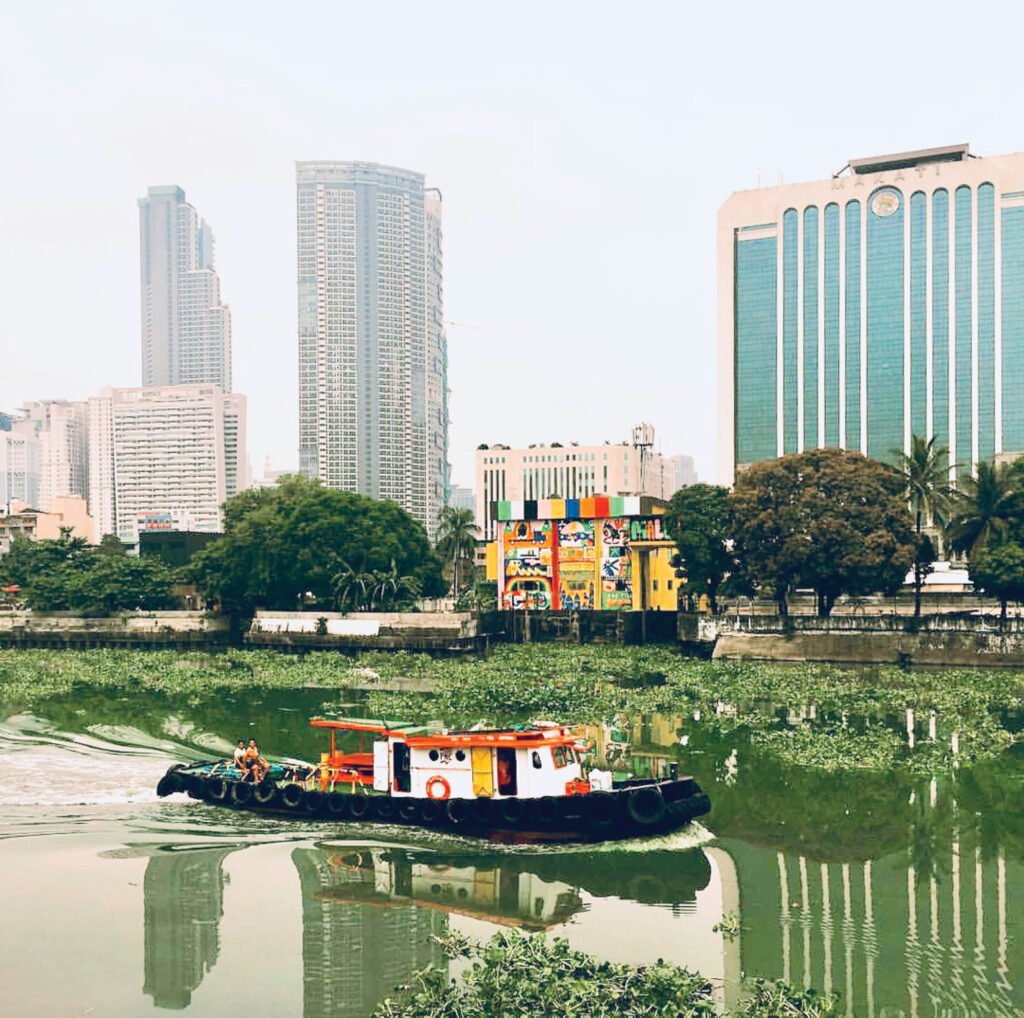

Paulo Alcazaren: Singapore has 320 public parks, around 3,000 hectares, servicing only five or six million people. While Manila has only about 200 hectares of parks and open space. So the ratio of open space to the population in Metro Manila is, I believe, just 0.2 square meters of public open space per person compared to Singapore’s six square meters. And Cebu has about 0.1 square meter open space. But aside from the size of the proportion is access, as Julia was saying. Everything has to be reached in minutes. And that is the metric that Singapore and New York have achieved, where you can reach a plaza or a park within 15 minutes of walking.
Julia Nebrija: One of the things that also got fast-tracked in the pandemic was around the transportation systems. The bus rationalization happened finally in Metro Manila. A new carousel was put in place on EDSA, of all places. The most challenging place to do anything to come up with a BRT light system. Cities are taking the opportunity to put in bike infrastructure that they’ve been sitting on for quite a while. The pandemic gave them the chance to green light and do it. And so I think we’re going to see a turning point in the transportation history of the Philippines.
Paulo Alcazaren: I agree. The other elephant in the room that’s come out because of the pandemic is housing. And the fact that people had to commute before pandemic two, three hours from very urban areas because that’s where they could afford to live has shone a light on the inequitable distribution and provision of social housing within the Metro. People haven’t yet started to look at that seriously because they are looking at transport first, but that’s the other thing with all government assets within Metro Manila. You can provide social housing and housing for everyone within city limits. So the commute times get cut down to half an hour. And the distance from where you live to where you work gets cut down from 60 kilometers to just 10 or 15. We need housing. That’s the bottom line.
Matute: What happened to the plans to bring the government offices to Clark?
Dizon: Thanks, Rhea. Yes. The president signed that executive order and that is underway, starting with satellite offices. You have to understand, it’s quite difficult to do that in one go. It’s a tremendous amount of change management to achieve that goal. This will happen with satellite offices initially. And then, the key government offices that do not need to be in Manila will move to New Clark City. The biggest agency that has already signed and started building in early 2021 is the Banko Sentral ng Pilipinas, which will move its entire currency production and printing facility from East Avenue in Quezon City to a 30-hectare property in New Clark City. The Department of Agriculture and Department of Science and Technology have also signed. It’s not going to be what Prime Minister Mahathir did, moving the entire Malaysian government to Putrajaya in less than 10 years. But we’ll get there eventually. So this must continue in the administrations succeeding this one.
Alexa Arañaz: We have a question from our audience. “Many cities built from scratch have proven to be failures, places like Songdo, Masdar, Cyberjaya, and not the world-class cities that were promised. So how can we ensure that Clark will not be any different from these failed cities?”
Dizon: That’s a great question. While, of course, there is no certainty, the best way to plan a greenfield city is to ensure that the infrastructure surrounding it is in place so that people can actually get there. That is the most important ingredient. And the key in Clark is number one, the infrastructure is there, and we’re even building more. So, for example, the airport is there, and we’re expanding it. The highways are there with NLEX and SCTEX. We’re expanding those as well, especially the roads connecting with the railway system, being built by Japan and ADB will soon be there, maybe in five years, all the way up to New Clark City. So the infrastructure is a key ingredient for that, where people can connect initially from populated areas such as Metro Manila and parts of Central and Northern Luzon.
The good thing about Clark and what it has going for it apart from the infrastructure is that Clark sits right smack in the middle of one of the most populous areas outside of Metro Manila in Luzon. It has one of the highest purchasing power in the Island of Luzon in the entire country, mainly due to the high number of OFW (overseas foreign worker) families living in the Central Luzon area surrounding Clark. In Tarlac, Pampanga, Zambales, Bataan, all the way down to Bulacan and all the up to Pangasinan and La Union.
And so those are critical ingredients that will hopefully ensure that we don’t end up with the likes of Brasilia, the likes of Songdo, and, to some extent, even Putrajaya. I’m going to guess people still don’t live there but commute all the way from Kuala Lumpur.
The third critical ingredient that is equally important is building a sense of community in the area. That’s why when Julia is still with us, we really painstakingly got involved in the soft infrastructure—the parks, the bike lanes, the pedestrian walks. Of course, they’re not big in scale like an airport or railway system or BRT system. But, for everyday people to actually live there, the soft infrastructure is critical, especially in a country, as Paulo said earlier, where there is a dearth of open spaces for people. And hopefully, once Clark and New Clark City develop into this, they will not have the same experience as those cities mentioned. One last point, especially noticeable during the pandemic—there’s been a tremendous increase in the volume of foot traffic. People come to Clark, from Metro Manila, from Pangasinan, and everywhere throughout Central and Northern Luzon. And you know what they would do in Clark? The bike, they stay in the parks. We have a big central park, about 20 hectares. And during the pandemic, every Friday, Saturday, and Sunday, that park is packed with people, families, bringing their tents, portable grills, and they barbecue. It’s just so heart-warming to see. It shows how desperate our people are for, you know, for things we’ve taken for granted for such a long time
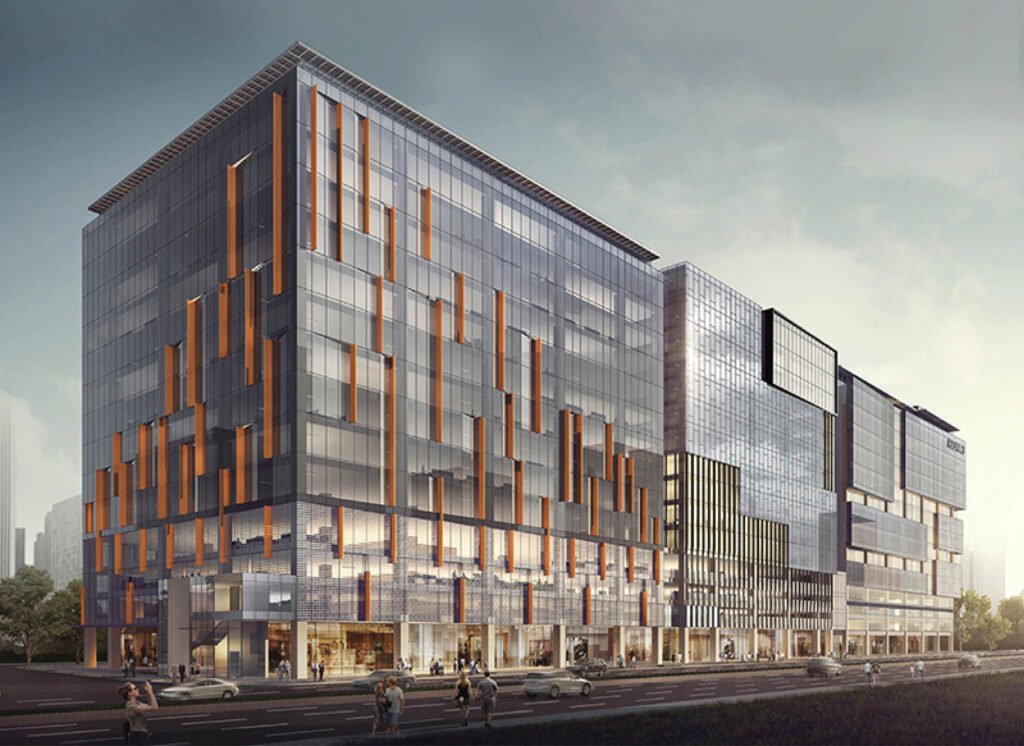

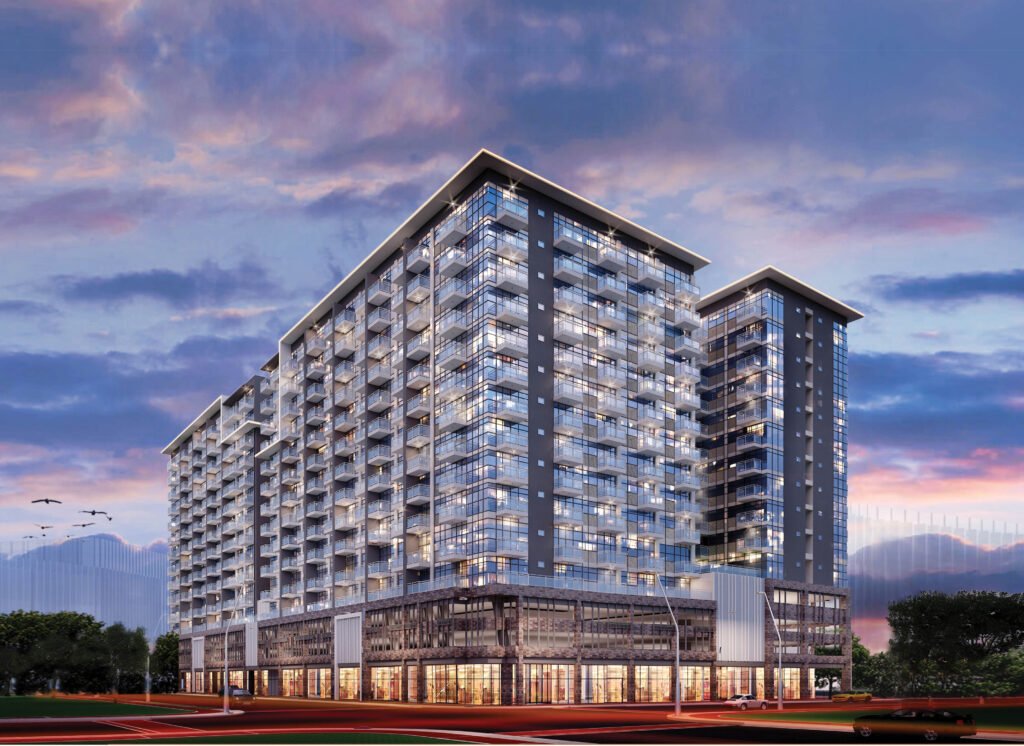

Julia Nebrija: One other thing people have to have for New Clark City to work is jobs. That’s why we worked to attract companies to locate there, looking at the regional economic development opportunities. Clark sits in the agricultural belt of the Philippines. There’s a lot of distribution chains. It could be a regional hub and an economic center. But now that people can work remotely as well, this could open up new economic opportunities in new cities so that you can live anywhere in the world. Most of the companies I’m reading about now allow this. If you went home to Ohio during the crisis, you don’t have to return to
San Francisco to work at a big company in Silicon Valley. You can work remotely in a place that has a good quality of life for you. And a place that you want to live and have a connection to and still have economic opportunities. That’s going to be huge for cities moving forward.
Matute: I know there have been some discussions also with BCDA on developing Clark into a creative city. There are three requirements: creative talent, technology, and tolerance. Again, given working remotely, it’s about putting in the infrastructure. That’s definitely a great opportunity for Clark to position itself. There are a lot of creatives around Clark. They can create the process outsources and have Clark be the center. Even leisure is very important for the creative task. Is there access to future opportunities for leisure? Future activities that can be integrated into their work-life? It’s not just about weekends, but having access to these recreational facilities before and after working. And Clark definitely has that.
Julia Nebrija: Being able to concentrate on that kind of daily journey, like you’re saying, Rhea, having leisure and socializing integrated into your everyday life, not having to make separate appointments and carve out time for recreation and friends. You know, that’s something that I’m now learning because I’m new in a new city, and during a pandemic, it’s not that easy! Especially with my Spanish, with a mask on, trying to, like, make friends awkwardly at the park.
But something I’ve learned is even just the simple act of going to the grocery store can be such an enjoyable part of my day. I walk through a plaza, I see something beautiful and comfortable. Things are safe. I’m not thinking about how much space I have around me cause it’s just, it’s just automatically there because it’s designed for people. And I think having that integrated into your daily life where it doesn’t have to be a big production—“Okay, let’s pack up, get in the car, and take the kids somewhere they can enjoy.”
Even when I lived in New York, things were quite segregated. I lived in Harlem, kind of in a food desert, and I had to walk very, very long distances to even reach a grocery store and my journey there wasn’t totally pleasant. So I really like Rhea’s point, and that’s something that I’m learning very profoundly now. Also, following the basics of urban design, having a mixed-use active ground floor, short blocks, you know, open spaces designed throughout it, it really does make it work. It’s not rocket science.
Ti: A question here from Rebecca Plaza. We talked about open space initiatives in areas like Rockwell, High Street, and Salcedo Village. How does this translate into open, liveable spaces for the informal sectors of our city? Especially now, we see a spike in COVID in areas like Tondo and places like that.
Paulo Alcazaren: The open spaces can be carved out. If you dedicate streets to pedestrians and get people to share the streets, then you can yield a lot of open space. Informal settlements are, of course, not the ideal settings for living in cities, and they are a reflection of a need for housing where there’s no housing provided. Still, you have to remember that most of our informal settlers have a FAR (floor area ratio) of less than 1.0 or less than 1.5. And if we provided them with social housing and medium-rise buildings with a FAR of 3 to 4 like Singapore or 5 to 10 like Hong Kong, we will generate open spaces at the ground level. Singapore has done that by putting housing on stilts with open spaces below. So it really has to go back to a proper way of building cities to provide social housing for everyone.
Julia Nebrija: Yes, I agree entirely with that. Many places are already highly built up. It will be about repurposing under-utilized space. When we were working on the Green, Green, Green program, we saw many examples of creative thinking. Like, okay, we have a stadium that’s used only a couple times a week, if ever. Let’s redesign, let’s re-landscape it and let people come in and use the green in the center of the oval as a park and let’s, you know, put pocket parks around. Let’s use that space under a bridge that’s kind of just a dead zone and activate it. Let’s make the waterfront into a place people can use. We need to really focus on good land-use planning, ensuring that we don’t just portion off every bit of land without some kind of plan. If you look across Metro Manila, it’s actually a very low city, like Paulo is saying. They’re privatizing a lot of these areas. Following basic land-use planning, we need to go back and say, “We need this amount of open space. We need to make sure people have access to this,” for those cities that still can do that, and many cities in the Philippines can.
Clifford Pearson: I’m just wondering, is Manila planning for autonomous vehicles? And how that might change the relationship between pedestrians and cars, the street, and the sidewalk. Is that something being explored?
Buds Wenceslao: I think we’re still planning for pedestrians before we plan for autonomous vehicles.
Cliff Pearson: The idea is that there’ll be many fewer crashes between people in cars that the separation and relationship between sidewalks and streets will change. It will open up more space for pedestrians. And, in some ways, go back to the way cities were about a hundred years ago when people walked in the streets because the vehicles were horse-drawn. And if you got hit by one, they were only going a few miles an hour. So anyway, from what I’ve been reading, the whole relationship between people and cars and streets and sidewalks could change, radically opening up a lot more open space for human beings.
William Ti: Or to actually leapfrog the whole traffic problem? I was wondering how Aseana and Clark would be dealing with smart cities and things like that, actually.
Buds Wenceslao: We’ve invested in our smart environment infrastructure by laying down fiber optic cables in the whole of Aseana. To be quite honest, there are so many new ideas coming in that we don’t know which smart city initiatives to adopt. We’ll do the test of time, but, at least for us, we are investing in the public realm, to be sure it’s accessible to everybody from the workers to, obviously, the condo owners.
But going back to Rebecca’s question, even if we open up public spaces, it’s still a far, far distance from the informal settlers. So that’s why I think housing affordability is a big issue that cities should tackle. Right now, we see all of the workers of the hotels and offices towers inside our developments. They can’t afford the spaces rented out in the area. Even for our own employees going home to Cavite, Laguna, and places two hours or more away. So we’re exploring container housing, prefab housing good for 10 years. We’re not even thinking about it in terms of, you know, 10-20% percent IRR (internal rate of return). We’re just thinking about it as an amenity for the people putting up offices, putting up businesses, and in the age of this pandemic where they want their employees to be near their offices, to be able to walk and bike to work.
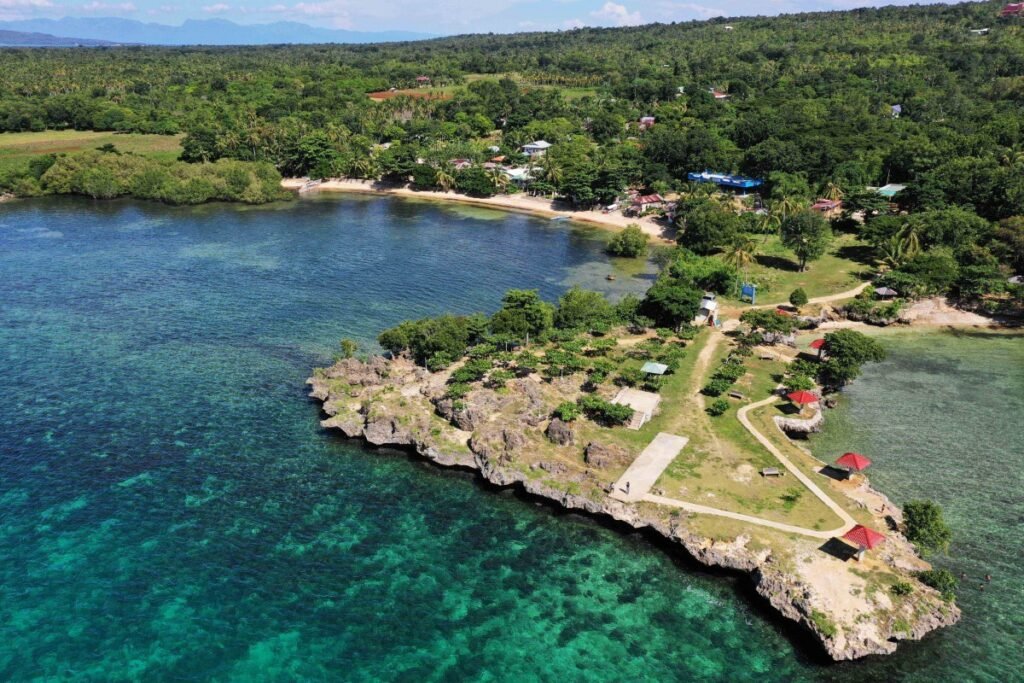

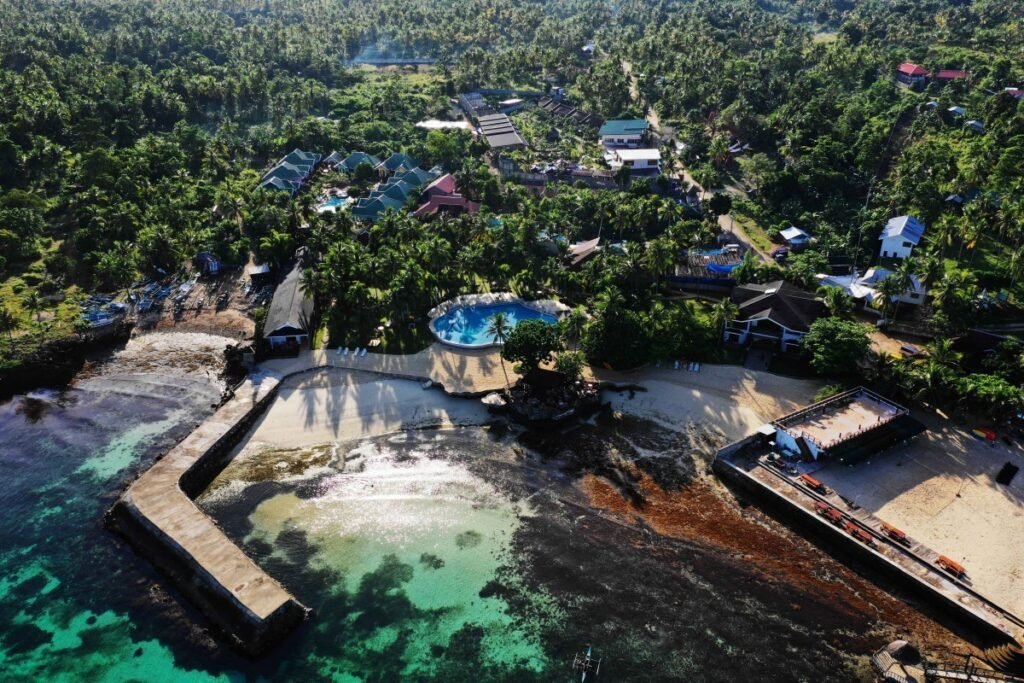

Paulo Alcazaren: Well, it all points to the fact that the government has abandoned its responsibility to provide shelter for everyone and allowing private, I’m sorry, Buds, private real estate developers to circumvent the original law that required a percentage of land to be used for socialized housing. The law required that housing developments were to put 20% affordable housing within the same site. But legislators introduced a loophole that allowed developers to provide that housing as far as 10, 15, 20 kilometers away.
The other problem is that in the city, in the Metro, even close to Aseana’s reclaimed area, there’s lots of government land, except that the default for the government agencies is to sell the land to the highest bidder. So then we lose the opportunity to provide socialized housing. But if you look at the backlog of the three or four million housing units in Metro Manila alone, there is money to be made in housing. Because the informal sectors actually pay a considerable part of their income to the powers that be that allow them to squat in those lands.
So, it doesn’t make any sense that government does not fulfill its job of providing housing given the three or four million backlog in Metro Manila alone. If you apply the socialized housing model of Hong Kong and Singapore, it can be done within five to ten years. It’s just that we don’t want to do it, or at least government doesn’t; I’m sorry. Is Vince still around? Is Clark Green City providing socialized housing?
Vince Dizon: That’s one issue that we have in Clark and this, I think, needs to be addressed. If not now, maybe in the next government and the next Congress. Because the limitation of Clark and Subic—because Reah would know, she stayed there—is all the land there is only for leasehold, even for Filipinos. And that is a big challenge in the Filipino culture, in the Filipino market. You know, that you cannot own the land you buy, knowing you cannot, since you cannot own it, you cannot, you cannot give it, give it to your, to your kids and your grandkids, and hindi mo pwedeng ipamana. That is a major constraint.
So what we are proposing, and we have a pending bill in Congress, is to allow for the sale of land for residential only and limited to roughly about five percent of total land holdings based on the master plan of Subic, Clark et cetera, et cetera. So that is our proposal. But this will require congressional action because, right now, in the law, all former US bases are only for lease, not for sale. So we need, we need to push that. Of course, there’s residential here. I live here, but I lease, a lot of people live here, but they lease. But if sales are allowed, then you would see a greater demand for land. For residential here in these zones.
Paulo Alcazaren: The compromise could be had by something more creative. You have leasehold, then you have freehold. The problem is we’ve been sold on this idea that you have to own the land on which your house sits. While in other countries, property is different from house and lot. The house-and-lot paradigm has been so inculcated that nobody wants anything except house and lots. But it’s just a matter of creative thinking. Rental housing is a good solution to shelter in cities, which other countries have adopted to solve their problems. The Department of Urban Development and Housing has to look at all other creative opportunities to address housing.
Vince Dizon: Yeah. Paulo, yeah. I agree with you. By the way, the market, our market is still not as much short as other markets, you know. However, there are legal impediments to what you’re saying because right now, under the Public Lease Act, you can only lease 50 percent plus 25, a maximum of 75. So for your ideas to work, you’re, you, you’ve gotta be talking about leasehold rights at about 99 years above, and for that, we require legislative actions. So we’ve got to, I mean, your ideas are great. We’ve just got to find a way to fix our regulatory framework, to modernize our regulatory framework, to accommodate those ideas.
Paulo Alcazaren: Vince, that’s why I’m running for Congress. Next election.
Vince Dizon: Good luck, sir.
Paulo Alcazaren: (Laughing) No, no, no, no, no, no.
William Ti: Why don’t you?
Paulo Alcazaren: The only way to change is to legislate, and our legislators are not doing their job if they’re not listening to what we actually need and providing for that. So I’m as frustrated as everybody else.
William Ti: Before we turn this over to Cathy and Cliff for their questions and reactions, we want to ask Vince about the elephant in the room. How do you think we are doing as a city right now? How are we going to get out of this situation as a city? And please share the government’s next steps with us.
Vince Dizon: You’re talking about the COVID response.
William Ti: Yes.
Vince Dizon: Well, you know, the spikes, the surges are worldwide, you know, everywhere is surging, and we just have to deal with it. It’s primarily being caused by the entry of these new variants that are more infectious. But, also, it’s also being caused as well by, you know, bottom line it’s, it’s fatigue, it’s fatigue. It’s, it’s, people just, you know, everybody’s just so tired and when you get tired, you, you tend to be more lax. So we’ve got to really find a way to do, to become more, to become as vigilant as we were when we were able to control this, in the middle of last year. Europe is surging. I’m sure Julia knows that. Well, not in Spain. I think they’re getting like 20,000 cases a day now. So, we’ve just got to really hold on until, you know, we get a significant chunk of our population vaccinated. That’s what we’ve got to do. And for the coming days, we’ll see what will, in all likelihood, some restrictions will be needed, but I don’t think we’re going to go into that now.
[Long pause]
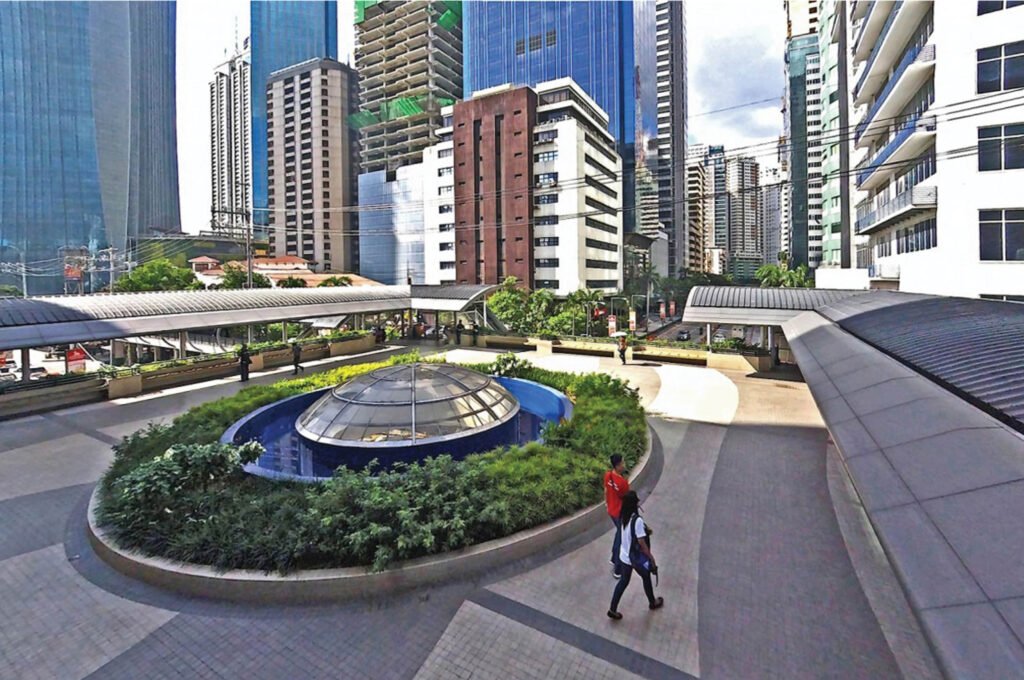



Vince Dizon: I’m sure that’s a question that you all want to ask me. Right? Are we going to lockdown? My answer to that is, most likely, no.
Paulo Alcazaren: Maybe a granular lockdown?
Vince Dizon: No, we’re already doing that. We’re already doing that, but we’ll be imposing some additional restrictions, especially in the homes and workplaces where a lot of the new transmissions are coming.
Rhea Matute: If I may, the Communication Design Association of the Philippines and the Design Advisory Council of Design Center is producing basically a free asset that we’re hoping to share with the Local Government Units. So again, as a nudge to the citizenry, you know, observe health protocols mandated by the Local Government Units. Yes. The COVID fatigue is there, but I can definitely feel that through more human-centered creative communication and reminding people to wear their masks, maintain social distancing, and look out for one another.
This is not for profit, so that they can use this and create signs for businesses to small sari-sari stores and local government units to remind people just to be conscientious.
Cathy Saldana: Cliff and I would like to do a round or two of questions and hear from all of our five panelists.
Cliff Pearson: Here in New York, what’s been interesting about the pandemic is that it’s revealed the connections that we all have with people that we took for granted—the people we now call “essential workers” were mostly invisible workers a year ago. And I’m wondering what the impact this sort of realization has on a place like Manila, which is even denser than New York City. The connections between different types of people and workers—is that creating a sense that everybody’s in this together? Or is it creating a sense of each group fighting for recognition and its own set of needs? Is this something that can be taken advantage of, or is this something that’s going to tear us apart?
Rhea Matute: In Filipino society? I think there’s a lot of compassion because we live in multi-generational households, and we have people outside of our immediate family who are part of our family. There is what we call “malasakit” or compassion. Personally, from my interactions, there is definitely an appreciation of the “invisibles” in society. I’m just hoping that this awakening is not temporary. But something that would increase in momentum if taken seriously.
Julia Nebrija: It’s a really loaded question, Cliff.
Cliff Pearson: It’s a pretty big question, sorry.
Julia Nebrija: I think COVID has been a huge equalizer. Because it can reach anyone. We’re talking about privileged places like Rockwell, which was one of the first places hit. So it is equalizing in that COVID could happen to anyone. And also, everyone is interdependent. And that was something I think many people took for granted, like what you’re saying. And what I hope has been realized from this is that marginalizing people doesn’t serve anyone well. I think a lot of privileged people felt that very strongly during the pandemic. You know, if your helpers can’t get to your house, if trash collectors can’t come to collect your trash, if people can’t go to the grocery store to work, you know, everyone felt now what it means and have been maybe humbled, and it’s creating much more empathy across society. I don’t see how that will translate in the long term, but I know that the opportunity has definitely been shown very strongly in Metro Manila.
Paulo Alcazaren: Yes. If you have the question of race in the States, here, in the Philippines, it’s a question of class. We all now realize, some more than others, that we can’t keep ourselves from everyone else, that there is no such thing as the formal enclaves and the informal settlements being apart. We’re all in this together, and we can’t exist without each other. And that translates to how we shape our cities. And hopefully, we move to shape our cities more equitably, with everyone participating in the process. I desperately recall what Jane Jacobs said—that cities can provide something for everybody only when they are created by everybody.
Buds Wenceslao: I definitely agree. Not to say that only master-planned communities should have this, but, you know, having mixed-use communities, having basic essentials available to everybody, accessible just by walking or biking. When Manila locked down, only people with private cars could travel, and you would hear about workers walking for kilometers along EDSA because there was no public transport. So as much as mobility is being, being repaired that we’re having more public transport options available to us, you can definitely see it when entire public transport with the LRT and the buses aren’t there. Julia was working with the Department of Transportation for such a long time. So we’re looking forward to seeing their projects from the subways, increasing the bypasses to actually come to fruition.
Cathy Saldana: I’d like to ask all five of you here, Vince, especially, about Clark and the new townships that BCDA and the government are putting together, and you, Buds, from the private sector—where are the new cities and the new townships as we try to get Metro Manila dispersed, where are they?
Paulo Alcazaren: The French couple who just won the Pritzker Prize won not because they built new buildings but because they found new uses for old buildings. And my personal opinion is that we don’t need new cities. We just need to build our old ones better and make them over. So they’re more friendly to people and to daily lives. There’s so much energy. We have to expand. I think we can afford a New Clark City only once in our life. The rest of the country has to be built on the bones of our historic cities because that’s where people already are. We will just spend too much energy trying to create new ones. The future for urban life aside from the Metro areas, which has its own set of problems, is in their secondary cities, like Bacolor, Iloilo, Tacloban, Tagbilaran, because they are much smaller in population size and have much better growth opportunities. This is where urban expansion can happen much more sustainably and equitably than creating, I’m sorry, green fields from open spaces. Because we can afford the environmental cost for that only once in our lifetime. But that’s my opinion.
Julia Nebrija: In addition to that, there will be growth following these new transportation lines. That will happen as well.
Vince Dizon: Where are they? The cities are going to sprout, well, the developments are going to sprout, where the infrastructure is going to be, as Julia correctly pointed out. And right now, the major infrastructure developments are happening North of Metro Manila. That’s why all the developers, they’re all, Ayala, Robinsons, Mega World, Vista, SM, everybody, you know, they’re all gravitating towards the area surrounding the Clark Airport area and around the major stops of the Manila to Clark railway being built. So it’s natural. I mean, I forgot who said this, but when they were building the interstate highway system in the US, that’s what they said, you build the road, and the development follows. It just works that way. So a lot of it is going to be in the, in the north, which, which is good, because I think, you know, the north has been largely underdeveloped the past couple of years, which has resulted in a lot of congestion south of Metro Manila, in Cavite, Laguna, Batangas, so it’s good that it moves, it moves. It will now move north.
But, just as a closing, because I’ve got to go in two minutes. Cliff, your question is very important, and I just want to say that, you know, unlike many countries, many developing countries, you know, the Philippines, unfortunately, is a country known for exclusivity. Filipinos aspire for exclusivity—exclusive subdivisions, exclusive clubs, everything exclusive—that’s a problem, and I guess it’s just really part of the natural evolution of our country.
We’re, we’re quite a young country, you know? And we have a very rich colonial heritage where I think this concept of exclusivity comes from the times way back in Spanish times. I think as the country modernizes and as the country gets more and more educated, especially these young guys here, these very vibrant young ladies and gentlemen here, you know, their generation has to break that. Because our generation is accustomed to living in exclusive subdivisions, studying in exclusive schools, and working for exclusive companies. But in modern times, as has been shown by many developed countries, the likes of Japan, Singapore, Malaysia, I mean, the concept of inclusivity becomes very important. And it’s going to be the responsibility of these younger guys to make sure that we break away from that exclusivity paradigm and move to more, to a more inclusive way of life. So with that, thank you, everyone. Sorry, I’ve to rush. Thank you.


Cathy Saldana: Well, that’s a very interesting endnote from Vince. We still have a couple of minutes, and we still would like to hear from the panel on policymaking for our cities.
Paulo Alcazaren: If I may, Cathy, one issue we failed to pick up is the cultural identity of a place, and that ties to what was said earlier—if we are going to set up townships, it is far better to build on the historic bone, the heritage legacies of these places, and expand on that. One of the challenges of all the new towns is finding something to latch onto. And it’s been almost impossible to do that in a greenfield site because when you build something from scratch when you build tabula rasa, it’s nearly impossible to produce that sense of place. And if you don’t have a sense of place or heritage, you don’t have a sense of community. We have forgotten that our towns and cities have long histories, and the embedded memories in them are enough to fuel our future urbanism. So that’s something we have to tackle as designers. We have to go back and get in touch with our roots and use that as a basis for our future designs.
Buds Wenceslao: You know, Paulo, one of the things I see in the US that I don’t see here are business improvement districts, where the local community is heavily involved in anything that the city wants to do. If they’re going to tear down a space, you know, you need to get the local community involved. Let’s say it’s a historical building. Then, you know, you need to basically preserve, preserve some of, somewhere, some of the heritage, or something like that. But we don’t see that in the community.
Paulo Alcazaren: Development in the Philippines is fraught with problems because of the nature of how we were all brought up, especially in the business community. It is family-centered, more parochial rather than place-based. Or it’s based on the connections we make–who you know, who you went to school with. And so civil society and the building of civic-mindedness, we’ve lost that. Before the Second World War, we were taught to find connections to our place and not just our families. We lost that as we rebuilt after the war due to urban sprawl and segregation from the enclaves we built. If you look at the definition of the city in the Philippine context, we have a disjoint between what government and developers define as a city. Bonifacio Global City calls itself a city, but it’s in Taguig City and Makati City, Eastwood City is in Pasig City, but it calls itself a city. So the definition of “city” is now being shaped, I’m sorry to say, by neoliberal forces, rather than civic-mindedness or the sense of being a community or a people. That’s a big discussion we have to have there.
Julia Nebrija: To loop it back into the public spaces, the most democratic space in the city is the public space. And that’s the best example to show that everyone builds. And everyone has a right to the city is equally distributing those amenities and not just having them in between a condo building where people can afford it or in a private subdivision where you can afford to allocate that space and fund it. But it’s really to have it equally distributed. Having everyone feel that they have that access to it. And even other places have this challenge, like in New York City, where you’ll have a waterfront, but you can only get there if you pass through an area you might not feel comfortable going into.
Making sure that everyone feels they have access to that space is crucial. Buds, as you move forward, something that would be interesting to think about. And the community engagement side is like, how do people, how will people shape the city? So, say that we will be born and raised in the city you’re building. What happens later? When I want to say, “Can I close the street?” Or “Can we put different trees here?” Do I have to go to a real estate management office? You know, I don’t have a barangay hall. I don’t have like a local representative I’m electing. You’re building a city by a developer. This was something that I struggled with. You know, having lived in Malate and Paco, then Poblacion, and then Rockwell. Who do I talk to? Who am I represented by? I think that that’s something that would be interesting to see moving forward, if you can create, not just like community activities, but also a conversation between the people who ended up being from there, you know, in the future.
Buds Wenceslao: Actually, there is an estate, you know, if you’re a resident there and you want something, people that—I doubt that they’ll go to the estate associates—but they’re absolutely like, you know, these kinds of innovations are—complaints, even complaints can be brought up. These are the things we want to tackle, and hopefully when you come, when you come back, Julia, hopefully, you can help us.
Cathy Saldana: Last words from the panel. Paulo?
Paulo Alcazaren: I miss traffic. I miss traffic because, before the pandemic, I would only have two meetings in a day, one in the morning and one in the afternoon. Today with Zoom, everybody wants to meet you. And I take five or six Zoom meetings a day; it’s ridiculous. I have no time to rest, and it’s just so tiring. So my definition of a great city is one where the Wi-Fi works. Once Elon Musk puts all of his satellites up in space, then that’s one solution.
But seriously speaking, the issues taken up in this discussion are all fascinating and hopefully will continue with Anthology year to year. And hopefully, we’ll see everyone again in much better circumstances next year. Thank you.
Buds Wenceslao: One of the key learnings we’re actually doing is our investment in the public space. We’ve built the condos, we’ve built the offices, but at the same time, you know, I’m heavily invested in building everything that’s for the residents and for the pedestrians, sidewalks, arcades or parks, or even building churches. So, you know, hopefully, these kinds of dialogues and learning from everyone—Cathy, Paulo, Julia have given me a lot of ideas.
Rhea Matute: We really need to emphasize the sense of place. I enjoy hearing stories from the older generations of what the place meant to them, and we need to help nurture that in the future generation—that sense of ownership of where they’re from or where they are. There is this quote from the president of the International Council of Design, Robert L. Peters, when he said, “Design creates culture. Culture creates culture. Culture shapes values. And values determine the future.”
Julia Nebrija: Thank you, everyone here, for such an excellent discussion. I’m happy to see you all. I miss you all a lot.
Cliff Pearson:I’m so impressed with your little co-worker there.
Julia Nebrija: Yeah, she’s just three months old. You know, over here, I get to walk on the street with two strollers. The minimum requirement for sidewalk space in the Philippines is 1.5 meters. That’s not enough for two kids in strollers. Our people do it, and they have no choice; they make the best of it in the Philippines, right. But, it’s a big lesson to designers, I think. When you’re thinking of how to plan a city, go out with a stroller. And if you can do it with a stroller, you can do it with kids. And if you can do it with kids, you can do it as a mother. And it will work for a lot of people.
Cliff Pearson: Thanks, everyone. The panel was great. There was a full range of scales addressed. Buds and Vince were dealing with larger developments, entire cities, while Paulo was talking about what we do with the places already there. So those are the two significant challenges. Creating new cities is one opportunity. Subic and Clark were there, to begin with. They just weren’t being used for anything that actually helped the people in the Philippines. So actually using them was a great idea.
But the other challenge is, what do we do with the neighborhoods on the ground right now? The question there is, how do you create capitalists for small-scale development? What is the role of the residents who are already there? What’s the part of the government? What’s the role of the private sector? But I agree with Paulo that the most interesting places are almost always the places with long histories. New cities are usually tricky places to live in for at least a hundred years. I remember reading about, you know, Washington DC. It took about a hundred years before it became an interesting place with small-scale neighborhoods and fabric that actually work on many different levels. Time is something that creates those connections and creates interest. But how do we create those sparks in the places already there, especially if we don’t want to wait a hundred years? And how do we make sure that they work well for the 21st century?
Cathy Saldana: Excellent point, Cliff. Thanks, everyone! •
Kanto.com.ph is a proud co-presenter of Anthology Festival 2021. This transcript was produced in support of the Festival and its organizers, WTA Architecture and Design.



